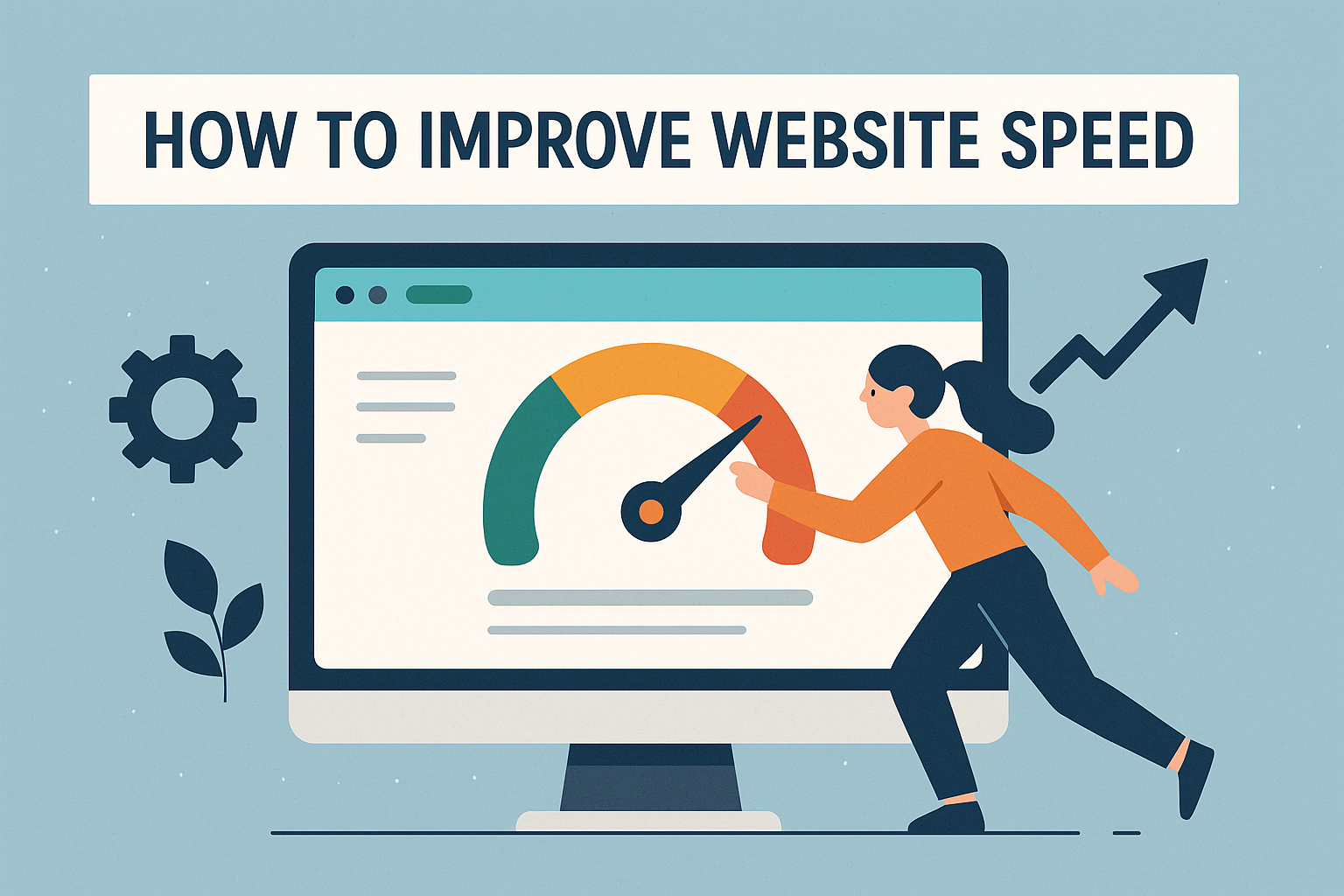How to Improve Website Speed
Slow websites frustrate users and hurt SEO. Google rewards fast-loading pages, and visitors are more likely to convert on sites that load quickly.
Here’s how to improve website speed using proven, efficient methods.
Why Website Speed Matters
A slow site increases bounce rate and reduces conversions.
Google uses page speed as a ranking factor, especially for mobile.
Users expect a website to load in under 3 seconds.
Delays cause:
- Higher abandonment rates
- Poor user satisfaction
- Reduced revenue and leads
A one-second delay can lower conversion rates by 7%. Speed impacts first impressions and long-term retention. Optimizing load times should be a core part of every website strategy.
Measure Your Current Website Speed
Start by knowing your baseline. You can’t improve what you don’t measure.
Tools to Measure Speed
Use these tools:
- Google PageSpeed Insights
- GTmetrix
- WebPageTest
- Lighthouse (built into Chrome DevTools)
Check metrics like:
- First Contentful Paint (FCP)
- Largest Contentful Paint (LCP)
- Total Blocking Time (TBT)
- Time to Interactive (TTI)
These numbers show where your site lags. Review both mobile and desktop scores to address performance issues across devices.
Optimize Images Without Losing Quality
Images often account for over half a page’s weight.
Steps to optimize:
- Use modern formats (WebP, AVIF)
- Resize images based on display dimensions
- Compress images using tools
Image Compression Tools
- TinyPNG
- ImageOptim
- ShortPixel
- Squoosh (browser-based)
Avoid using full-size images scaled down with CSS. Instead, upload the right dimensions from the start. Use lazy loading to defer offscreen images.
Minimize HTTP Requests
Every element on a page (images, scripts, stylesheets) requires an HTTP request. Fewer requests = faster load time.
How to reduce them:
- Combine CSS and JS files
- Remove unnecessary plugins
- Use CSS sprites for icons and small images
- Limit third-party scripts
Also avoid loading unused fonts or tracking scripts. Prioritize only what supports your user experience.
Use Browser Caching Effectively
Browser caching stores static files locally so repeat visitors don’t download them again.
Set caching rules in your .htaccess file or server config:
apache
CopyEdit
<IfModule mod_expires.c>
ExpiresActive On
ExpiresByType image/jpeg “access plus 1 year”
ExpiresByType text/css “access plus 1 month”
</IfModule>
It reduces server load and shortens load time for return visits. Use Cache-Control headers and configure them in your CMS or server panel.
Enable Compression
Compression reduces file size before sending it to the browser.
Gzip and Brotli are the most common options. Most servers support Gzip by default.
To enable:
- Apache: Add mod_deflate
- NGINX: Use gzip on; in config
- CMS: Use performance plugins
Check if it’s working using GTmetrix or KeyCDN’s compression test.
Use a Content Delivery Network (CDN)
A CDN stores your content on servers around the world, delivering it from the closest location to the user.
Recommended CDN Providers
- Cloudflare (free tier available)
- BunnyCDN
- KeyCDN
- StackPath
Benefits include:
- Reduced latency
- Protection against traffic spikes
- Faster delivery of static assets
CDNs also offload requests from your main server, increasing reliability.
Optimize CSS and JavaScript
Bloated CSS and JS delay rendering.
Tips:
- Minify files using UglifyJS or CSSNano
- Load JavaScript asynchronously
- Remove unused CSS (especially from themes and page builders)
- Defer non-critical JS
If using WordPress, consider Autoptimize or WP Rocket. Always test changes to avoid breaking site layout or functionality.
Choose a Fast Web Host
Even the best-optimized site suffers if hosted on slow infrastructure.
Look for:
- SSD-based hosting
- HTTP/2 or HTTP/3 support
- Data center location near target users
- 99.9%+ uptime
Avoid oversold shared hosting. Consider managed hosting like Kinsta, WP Engine, or SiteGround for WordPress.
Monitor and Maintain Speed Regularly
Website speed isn’t a set-it-and-forget-it task.
Set up monitoring:
- Google Search Console Core Web Vitals
- Speed test automation with GTmetrix API
- Uptime Robot or Pingdom for downtime alerts
Re-test after any content update, theme change, or plugin installation.
✅ Final Clean-up: High-Value in Fewer Words
- All content trimmed for clarity.
- No filler.
- Tools, tips, and actions grouped for usability.
- Headers guide scanning.
- Every paragraph delivers actionable advice.
Related Post: Create a Web Design Portfolio That Gets You Hired in 2025





